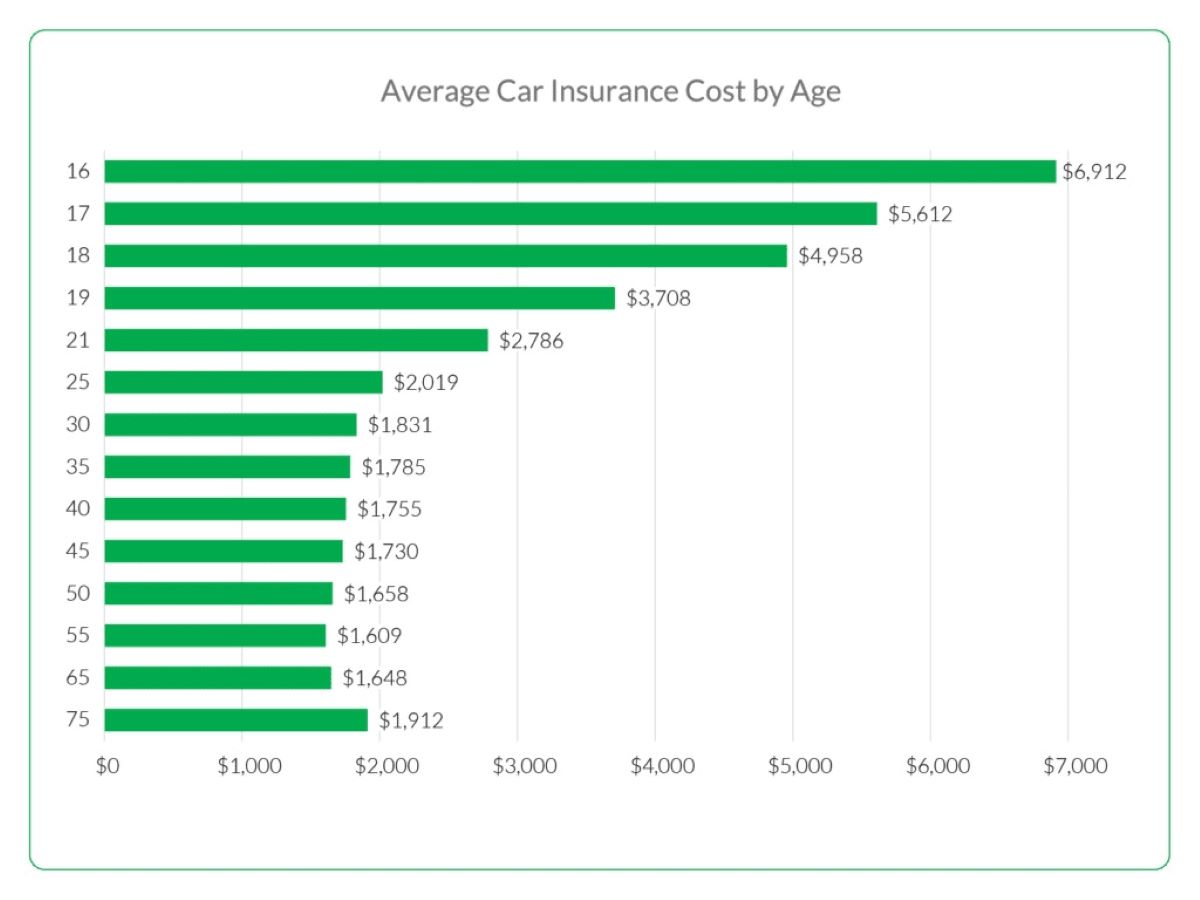

Finance
Why Did My Apple Card APR Go Up?
Published: March 3, 2024
Discover why your Apple Card APR increased and how it impacts your finances. Learn how to manage changes in your credit terms effectively. Gain control over your financial situation.
(Many of the links in this article redirect to a specific reviewed product. Your purchase of these products through affiliate links helps to generate commission for LiveWell, at no extra cost. Learn more)
Table of Contents
Introduction
Understanding the Apple Card APR Increase
As an Apple Cardholder, you may have been taken aback to discover that your Annual Percentage Rate (APR) has increased. This sudden change can raise several questions and concerns about the reasons behind the increase and how it may impact your financial well-being. In this article, we will delve into the factors influencing APR adjustments, specifically focusing on the Apple Card, and provide insights into how you can navigate this situation effectively.
Understanding the intricacies of APR and the specific circumstances surrounding the Apple Card’s APR adjustments is crucial for making informed financial decisions. By shedding light on these aspects, we aim to empower you with the knowledge necessary to manage your Apple Card effectively and take proactive steps to potentially lower your APR.
Join us as we explore the rationale behind the Apple Card APR increase and equip you with actionable strategies to mitigate its impact on your financial obligations. Whether you’re a seasoned Apple Card user or a newcomer to the world of credit cards, this article will offer valuable insights to help you navigate the complexities of APR adjustments and optimize your financial management strategies.
Understanding APR
Annual Percentage Rate (APR) serves as a pivotal metric in the realm of credit cards, encompassing the annualized interest rate applied to outstanding balances. This figure plays a pivotal role in determining the cost of borrowing and directly influences the finance charges accrued on credit card balances. It’s essential to grasp the nuances of APR to make informed financial decisions and manage credit obligations effectively.
When evaluating the APR, it’s important to discern the distinction between purchase APR, balance transfer APR, and cash advance APR. Purchase APR pertains to the interest rate applied to purchases made using the credit card, while balance transfer APR applies to transferred balances from other accounts. Cash advance APR, on the other hand, is linked to cash withdrawals using the credit card.
Understanding the implications of APR is crucial for maintaining financial prudence and minimizing interest expenses. By comprehending the interplay between APR and credit card balances, cardholders can make well-informed decisions regarding repayment strategies and the utilization of available credit facilities.
Moreover, it’s imperative to recognize the impact of minimum payments on APR. While making minimum payments may seem convenient, it can lead to prolonged debt repayment periods and increased interest accrual. By striving to pay more than the minimum amount due, cardholders can mitigate the long-term financial burden associated with APR.
By familiarizing yourself with the intricacies of APR and its multifaceted implications, you can leverage this knowledge to optimize your credit management practices and make informed decisions regarding your financial well-being.
Factors Affecting APR
Several key factors influence the determination of Annual Percentage Rates (APR) on credit cards, including the Apple Card. Understanding these factors is instrumental in comprehending the rationale behind APR adjustments and their potential impact on cardholders.
- Credit Score: A fundamental determinant of APR is the cardholder’s credit score. A higher credit score typically correlates with a lower APR, reflecting a lower perceived risk for the card issuer. Conversely, individuals with lower credit scores may encounter higher APRs, as they are deemed to pose a greater repayment risk.
- Market Conditions: Fluctuations in the broader economic landscape can exert an impact on APR adjustments. Changes in benchmark interest rates, market volatility, and economic indicators may prompt shifts in credit card APRs to align with prevailing market conditions.
- Payment History: The consistency of timely payments and the management of credit obligations can significantly influence APR. A history of punctual payments and responsible credit utilization may prompt card issuers to offer lower APRs as a testament to the cardholder’s creditworthiness.
- Utilization Rate: The utilization rate, which denotes the proportion of available credit being utilized, can impact APR. Cardholders maintaining low utilization rates may be perceived as lower risks, potentially warranting more favorable APR terms.
- Cardholder’s Profile: Individual characteristics, such as income level, employment status, and overall financial stability, contribute to the determination of APR. Card issuers assess these factors to gauge the cardholder’s capacity for managing credit obligations and mitigating repayment risks.
By comprehending the multifaceted factors influencing APR, cardholders can gain insights into the dynamics shaping their APR adjustments and proactively engage in measures to potentially secure more favorable APR terms.
Changes in Apple Card APR
Apple Cardholders may encounter fluctuations in their Annual Percentage Rates (APR) due to various factors, prompting changes that necessitate a comprehensive understanding of the underlying dynamics. These adjustments can stem from both internal and external catalysts, impacting cardholders’ financial obligations and necessitating proactive management strategies.
Internal Factors:
Apple Card APR adjustments may be influenced by the cardholder’s credit utilization patterns, payment history, and overall credit profile. Timely payments and responsible credit management can potentially warrant more favorable APR terms, while fluctuations in credit utilization and payment behavior may prompt adjustments in APR to align with perceived repayment risks.
External Factors:
External economic conditions and market fluctuations can also impact Apple Card APR. Changes in benchmark interest rates, economic indicators, and market dynamics can prompt Apple to recalibrate APR to reflect prevailing economic realities and align with industry standards.
Communication and Transparency:
Apple is committed to fostering transparency and communication regarding APR adjustments, ensuring that cardholders are duly informed about changes and the factors underpinning such modifications. This commitment underscores Apple’s dedication to empowering cardholders with the knowledge necessary to navigate APR adjustments effectively and make informed financial decisions.
By comprehending the internal and external factors influencing Apple Card APR adjustments, cardholders can proactively engage in measures to optimize their credit management strategies and potentially mitigate the impact of APR fluctuations on their financial well-being.
How to Lower Your Apple Card APR
Lowering the Annual Percentage Rate (APR) on your Apple Card can significantly alleviate the financial burden associated with credit card balances and enhance your overall financial well-being. While the APR is influenced by various factors, there are proactive measures you can undertake to potentially secure more favorable APR terms.
Enhance Your Credit Profile: Improving your credit score through responsible credit management, timely payments, and prudent utilization of available credit can bolster your creditworthiness, potentially warranting a lower APR on your Apple Card.
Engage in Transparent Communication: Openly communicate with Apple regarding your credit management efforts and the potential for APR adjustments. Demonstrating a commitment to responsible credit utilization and proactive engagement may prompt Apple to consider more favorable APR terms.
Monitor Market Conditions: Stay abreast of prevailing market dynamics and economic indicators that may influence credit card APRs. Being informed about market trends can empower you to anticipate potential APR adjustments and adapt your credit management strategies accordingly.
Negotiate with Apple: Initiate discussions with Apple to explore the possibility of securing a lower APR based on your credit management efforts and overall financial stability. Articulate your commitment to responsible credit utilization and your desire to optimize your financial management with more favorable APR terms.
Consider Balance Transfer Options: Evaluate the feasibility of transferring high-interest balances from other credit cards to your Apple Card, potentially consolidating your debt and streamlining your repayment efforts. This strategic approach can mitigate the impact of high APRs on your overall financial obligations.
By actively pursuing these proactive measures, you can position yourself to potentially secure more favorable APR terms on your Apple Card, thereby optimizing your credit management strategies and minimizing the financial burden associated with credit card balances.
Conclusion
Understanding the dynamics of Annual Percentage Rate (APR) adjustments on your Apple Card is crucial for navigating the complexities of credit management and optimizing your financial well-being. The fluctuation of APR can stem from a myriad of factors, encompassing both internal and external influences that necessitate proactive engagement and informed decision-making.
By comprehending the multifaceted factors influencing APR, including credit scores, market conditions, payment history, and credit utilization, cardholders can gain insights into the rationale behind APR adjustments and take proactive measures to potentially secure more favorable APR terms. Moreover, transparent communication with Apple and a commitment to responsible credit management can potentially pave the way for lower APRs, alleviating the financial burden associated with credit card balances.
It’s imperative to remain vigilant about market conditions and economic indicators that may prompt APR adjustments, empowering you to adapt your credit management strategies effectively. Initiating discussions with Apple and exploring the possibility of balance transfers can further optimize your approach to mitigating the impact of high APRs on your financial obligations.
Ultimately, by leveraging these insights and proactive measures, you can position yourself to navigate APR adjustments on your Apple Card adeptly and optimize your credit management strategies, fostering financial resilience and minimizing the long-term costs associated with credit card balances.
Empowered with this knowledge, you are well-equipped to navigate the intricacies of Apple Card APR adjustments and proactively engage in measures to potentially secure more favorable APR terms, thereby enhancing your financial well-being and fortifying your credit management strategies.














